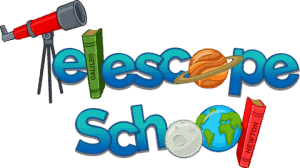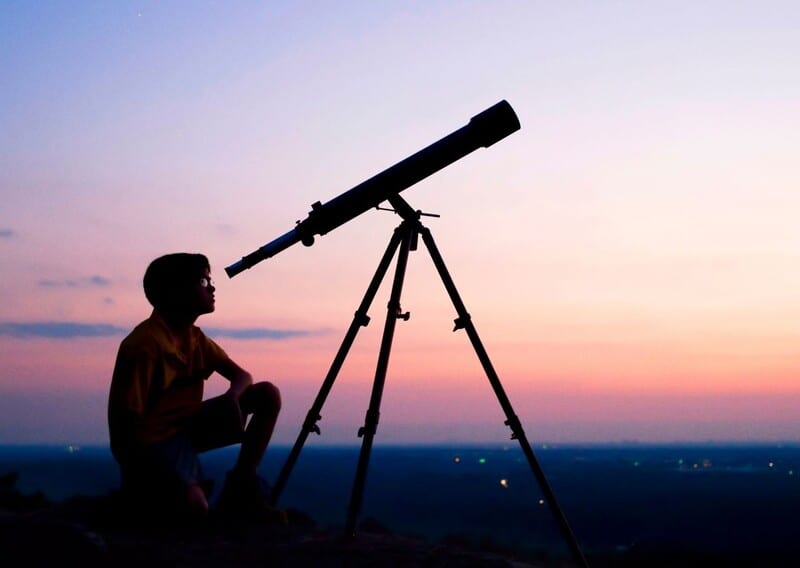If you’re just beginning your astronomy Journey, or perhaps you’re buying a present for a child, it may be best to know which one is easiest to set up. Because, let’s face it, the fun is in looking through the telescope. So, let’s find out what is easiest.
Refractor telescopes are easy to set up and use because their optic lenses are set in place. These telescopes are often accompanied by an Alt-Azimuth mount. The telescope & mount requires no alignment to use. It is just a point-and-view concept.
Okay, we have our quick answer, but what’s the deeper reason refractors on an alt-azimuth mount are easiest? If you need to start at the beginning before we dive deeper and learn what a telescope is or let’s see which may be easiest by continuing below.
Why Is The Refractor Telescope Easiest To Use?
As we touched on above, a refractor telescope is the easiest to set up because the lenses are set in place. There is no collimation needed keeping the alignment and fine-tuning of any optics involved.
The only fundamental moving part of a refractor-style telescope is the focus knob. Further, accessories like erect image diagonals and extension tubes can complicate it. Still, technically a good refractor can see Saturn’s rings out of the box. Below is my favorite beginner telescope below $250
Another common-style telescope is a reflector telescope. These telescopes usually have bigger mirrors and allow for more light collection, but they need to be collimated out of the box typically.
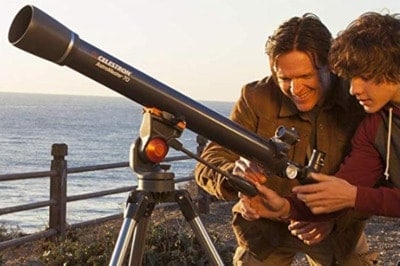
Also, most refractor telescopes in the beginning price range, let’s say under $250, are on an alt-azimuth mount. The alt-azimuth mount is simple to use. It’s basically like a video or camera tripod. The “alt” part of the alt-azimuth mount stands for Altitude, and the “azimuth” function is the left to right.
So, in making it comparable to a camera stand, the Altitude would be the same as the Tilt function. Leaving the azimuth movement the same as a camera stands Pan function.
What Makes The Reflector Telescope Harder To Use Than A Refractor Style?
A reflector can be easy to use, but when comparing a reflector and a refractor telescope, the reflector usually requires some fine-tuning in the mirror alignments. That fine-tuning is called collimation.
Collimation can be simplified with a laser tool to show the location in a center grid pattern to see true alignment. check out what I mean on Amazon products. Or learn more about alignment Setting Up Your Telescope For The First Time
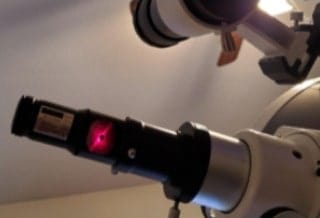
Now, I do not want you to be hesitant and shy away from a reflector telescope because of collimation. Instead, I would like for people to realize that collimation is a step needed to set up your reflector telescope. Again, that step can be simplified with a collimation tool, such as the laser collimation tool.
Why The Alt-Azimuth Telescope Mount Is Easiest To Use
As touched on above, the alt-azimuth telescope mount has an intuitive function, just like a camera stand. Most people have used a camera stand at some point in their life, and even if they have not, it is an intuitive design to use.
By functioning the up and down movement, the Altitude on the telescope mount, or tilt on a camera stand, you move the mount or stand until the object is in view. Thus, leaving the azimuth the same as the pan function on a camera stand, it is the movement left and right that brings the object you are viewing into sight.
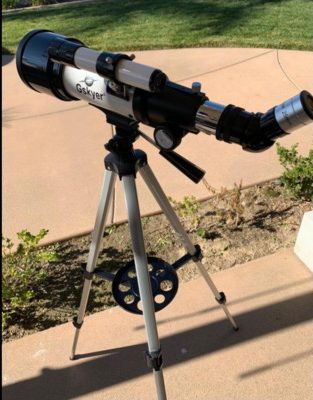
However, this function has a downfall because the night sky does not move in an up-down or left-right pattern. Instead, the night sky spins. Typically from the point of view of an earth-bound observer, it travels as in Arc.
In the northern hemisphere, it is an arc or rotation based on the center point, being the star Polaris, also called the North Star. To find out more about how to find the North Star check out Why You Should Know How to Find The North Star
To track an object as the night sky spins around Polaris from the Northern hemisphere point of reference, one would need an equatorial telescope mount.
Again, these mounts aren’t that hard to use, but they add an extra step to the learning curve.
Why Are Other Telescope Mounts Harder To Learn Than The Alt-Azimuth?
As a beginner astronomer, the fewer steps involved and the less you have to do for alignment, the easier it will be to actually view something through your telescope.
This is why Alt-Azimuth mounts are easy because they are point and view as it were. Compared to an Equatorial Mount that requires extra alignment. Besides alignment, you should also level your equatorial mount.

Most astronomers, after a while, do want to view an object over the entire night sometimes. This does require tracking the object as it arcs through the night sky. This would require leveling your equatorial mount, then aligning the mount to Polaris.
Now that you are aligned, you can use your star map, knowing the time of night and time of year, to find most anything in the night sky. If they are in the same hemisphere, at least.
My Pick for a Great Beginner Telescope Under $250
This is not a selling article, but if you were searching for what this article is about, it’s a good chance you may be looking for a beginner telescope. So far in my research, this is what I have found to be my favorite telescope for a beginner. Because you get a decent size aperture, plus you get what this article is about a good quality refractor telescope on a good quality beginner alt-azimuth mount.
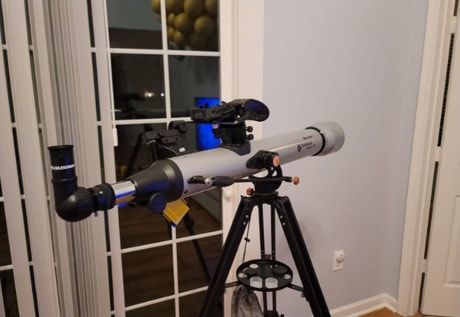
What I like about this telescope is it is a fairly large aperture of 80mm, it is brand name Celestron, so it should be somebody standing behind it. The f11 or focal length of 900mm means you should be able to magnify and see some planet activity with the 10mm and 25mm eyepieces that come with it.
The 10mm will give you a 90X power magnification. Which is enough to see Saturn’s rings. With the 2X Barlow, it would be like having a 5mm, 10mm, 12.5mm, and 25mm eyepiece.
An excellent option is the Star Sense feature. You can easily increase setup and alignment to everything in the night sky with an alt-azimuth mount and telescope. Check out stock options by clicking here
The only downfall with using your cell phone is losing some of your dark vision, which will inhibit your faint object viewing. Read more about What Is Dark Vision When Using A Telescope
Celestron is a good company, but they often don’t throw high-quality Plossl eyepieces or a 4 lens multi-coated barlow in the box. By slowly adding higher quality eyepieces and a barlow over time, you have a telescope that can provide years of enjoyment.
Conclusion
My conclusion is totally based on where you’re at in your astronomy journey. Because if you’re already checking out Moon transits across Jupiter, then it doesn’t really matter what I say here.
However, if you searched for; the easiest telescope to set up and use, that means you probably want something quick to set up and easy to use. You get the job done. The job is enjoying the night and looking at our neighboring celestial objects.
Need More?
Based on this article, at least one of these articles will interest you next…
Are Computerized Go-To Telescopes Worth The Price?
Troubleshooting a Blurry Telescope, Top 6 fixes
Can I Wear Corrective Wear, Glasses or Contacts Using a Telescope
